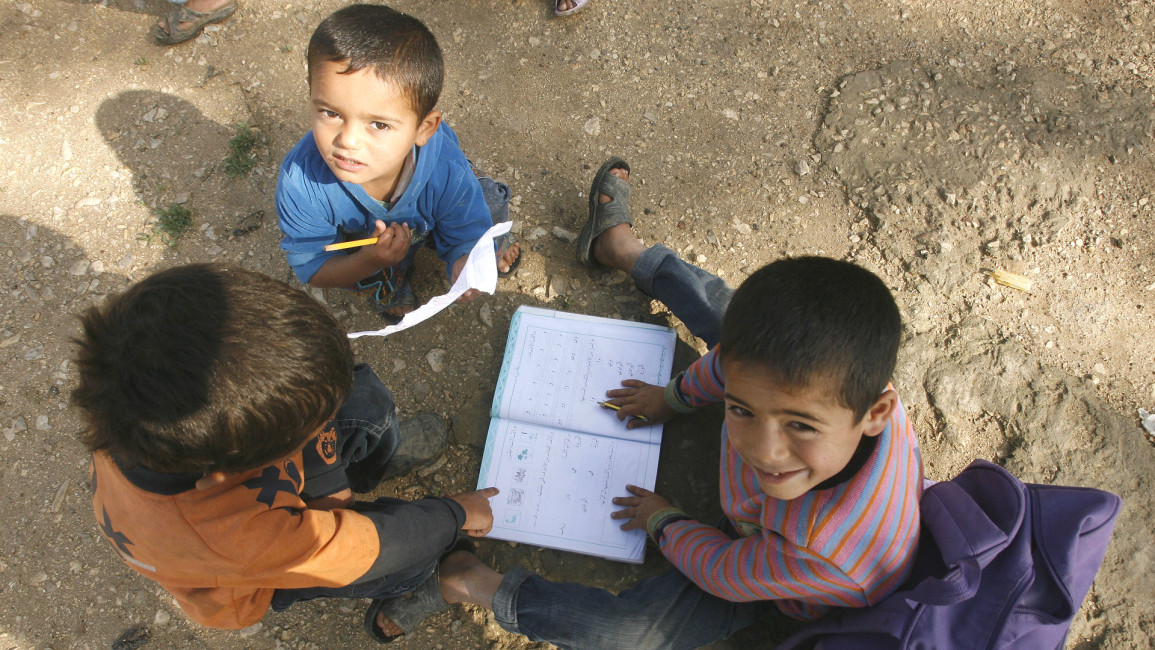Millions of Middle East children 'not at school'
The shocking calculation by the agencies shows the devastating implications of armed conflicts or political turmoil several countries around the region are experiencing, which is preventing children from learning.
As violence expands, millions more will be at risk of becoming a "lost generation" deprived of the knowledge and skills needed to be successful adults, the study stressed.
"At a time of such change and turmoil, this region simply cannot afford to let 21 million children fall by the wayside," Regional Director for UNICEF MENA, Maria Calivis said.
According to the report, 12.3 million children and young adolescents in MENA are already out of school and over six million children are at risk of dropping out.
In addition to this, the turmoil in Syria and Iraq, which has destroyed large parts of the education system, means a further three million cannot go to school.
With no end in sight in either conflict, there may be a possibility of these numbers increasing.
"These children must be given the opportunity to acquire the skills they need through education in order to play their part in the region's transformation" Calivis added.
In the last decade, countries in the Middle East and North Africa invested considerable resources and political capital to bring more children into the classroom, and out-of-school rates for primary school children plummeted by as much as half.
But in recent years, progress has stalled. The report reveals that 4.3 million primary-aged children and 2.9 million lower secondary-aged children are still not in school.
An additional 5.1 million children are not getting a year of pre-primary school education – the foundation on which a child’s future learning is built – resulting in the staggering figure of 12.3 million children across 20 countries being left behind.
Poverty
The study also found that poverty was a core reason keeping children out of school. In many cases, families could not afford costs associated with schooling, including books and uniforms, or the loss of income from a child who could be put to work.
A Human Rights Watch report on children working in settlement farms in the Jordan Valley area found that many felt they had no alternative but to find work to help support their families.
"So what if you get an education, you'll wind up working for the settlements," one child said.
Gender differences
Social norms and traditions continue to be major barriers for girls’ education in the region, the report found, and with perceptions and expectations on roles of women and men valued differently, this in return can have negative implications when it comes to schooling decisions.
On average, a girl in MENA is 25 percent less likely to be in school than a boy.
Since girls are not expected to work, their families see no need for them to learn, with the practice of early marriage being one of the most extreme barriers for girls schooling.
The report found this to be the most prevalent cause of early school leaving in areas including Djibouti, Egypt, Iraq, Jordan, Sudan and Yemen.
The study pointed to particularly high levels of dropout from lower secondary education by boys in Kuwait, Lebanon, Morocco, Palestine, Tunisia and Algeria - with a lack of motivation in the latter two countries being driven by an uncertainty in future employment.
Girls, on the other hand, expressed a desire for liberation with education being seen as the only way for social advancement. As a result, the report revealed that girls were far more motivated and showed stronger demand for secondary and higher education.
"We need targeted interventions to reach the families displaced by conflict, the girls forced to stay home and the children obliged to work," said Silvia Montoya, Director of the UNESCO Institute for Statistics.
The report called for "sufficient funding for education in emergencies" and national governments in the region to "adopt flexible approaches for accommodating the education needs of conflict-affected children."
"This is what the children want, this is what parents what," UNICEF's Calivis said.
 |
|
| Breaking up the numbers: Click here for larger image |



